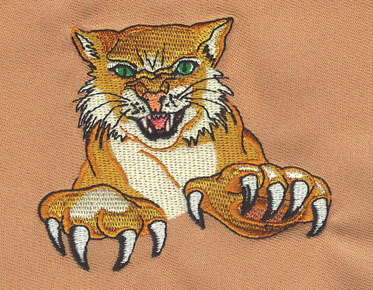Stitching Realism: A Deep Dive into Simulated Process Embroidery for Photorealistic Designs
Embroidery has long been celebrated as an art form, with its intricate stitches and vibrant colors adding texture and dimension to the fabric. In recent years, advances in technology have pushed the boundaries of traditional embroidery techniques, allowing designers to achieve photorealistic designs previously thought impossible. One such innovation is simulated process embroidery, a technique that combines the precision of digital printing with the tactile beauty of embroidery to create stunningly realistic images on fabric. In this guide, we will explore the fascinating world of simulated process embroidery, from its origins and techniques to tips for achieving photorealistic results in your own embroidery projects.
Understanding Simulated Process
Embroidery
Simulated process embroidery is a digital embroidery technique that uses specialized software and machinery to replicate the intricate details of a photograph or image in a thread. Unlike traditional embroidery, which relies on manual stitching to create designs, simulated process embroidery translates digital images into embroidery files that are then stitched onto fabric using an embroidery machine.
The process begins with selecting a high-resolution digital image and converting it into a format compatible with embroidery software. The software then analyzes the image and generates a series of stitches and thread colors that closely match the original image. These stitch files are then loaded into an embroidery machine, which embroiders the design onto fabric using a combination of thread colors and stitch types to create a photorealistic reproduction of the original image.
Advantages of Simulated Process
Embroidery
Simulated process embroidery offers several advantages over traditional embroidery techniques, particularly when it comes to achieving photorealistic designs:
1. Precision and Detail: Simulated process embroidery allows for precise control over stitch placement and density, enabling designers to capture even the smallest details of an image with remarkable accuracy.
2. Color Reproduction: By using a wide range of thread colors and blending techniques, simulated process embroidery can reproduce the full spectrum of colors found in a digital image, resulting in vibrant and lifelike designs.
3. Complexity and Depth: Simulated process embroidery can create designs with multiple layers of stitching, adding depth and dimension to the finished embroidery and enhancing its realism.
4. Versatility: Simulated process embroidery can be applied to a wide range of fabrics and garments, including cotton, denim, polyester, and even leather, making it suitable for a variety of applications, from apparel and accessories to home decor and promotional items.
5. Durability: Despite its intricate appearance, simulated process embroidery is surprisingly durable and long-lasting, with the embroidered designs retaining their color and clarity even after repeated washing and wear.
Tips for Achieving Photorealistic
Designs
While simulated process embroidery offers endless creative possibilities, achieving photorealistic results requires careful planning and attention to detail. Here are some tips for creating stunningly realistic designs with simulated process embroidery:
1. Start with High-Quality Images: To achieve the best results, begin with a high-resolution digital image that is clear, sharp, and well-lit. Avoid images that are pixelated or blurry, as these will result in a less-than-optimal embroidery outcome.
2. Consider Scale and Detail: When selecting an image for embroidery, consider the scale and level of detail required to achieve the desired effect. Keep in mind that complex images with fine details may require larger embroidery areas and higher stitch counts to capture all the nuances of the design.
3. Choose the Right Thread Colors: Selecting the right thread colors is crucial for achieving accurate color reproduction in simulated process embroidery. Use a color chart or color-matching software to identify the closest thread colors to those in the original image, and adjust as needed to achieve the desired color balance and contrast.
4. Experiment with Stitch Types: Simulated process embroidery offers a variety of stitch types and techniques, including satin stitch, fill stitch, and gradient blending, that can be used to create different textures and effects. Experiment with different stitch types and densities to achieve the desired level of detail and realism in your embroidery designs.
5. Test, Test, Test: Before embroidering the final design onto your fabric or garment, always test the embroidery file on a sample piece of fabric to ensure that the colors, stitches, and details are accurate and to make any necessary adjustments. This will help prevent costly mistakes and ensure a successful embroidery outcome.
In Conclusion
Simulated process embroidery is a powerful tool for creating photorealistic designs that push the
boundaries of traditional embroidery techniques. By combining the precision of
digital printing with the tactile beauty of embroidery, designers can create
stunningly realistic images on fabric that captivate the eye and inspire the
imagination. Whether used for apparel, accessories, or home decor, simulated
process embroidery offers endless creative possibilities for expressing your
unique vision and bringing your designs to life with unparalleled realism and
beauty. So why not explore the world of simulated process embroidery and
unleash your creativity today?



